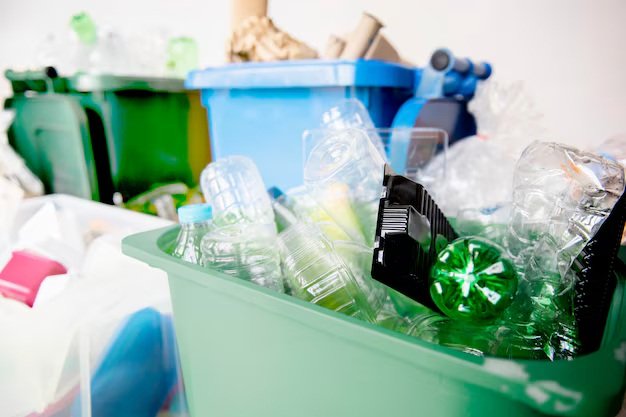How Professional Sports Are Turning Matchday Waste into Wins for the Planet
Stadiums used to be measured only by goals, runs and attendance. Now, increasingly, they are being judged by how much waste they stop from ending up in a landfill. Across leagues and continents, clubs have started treating matchday rubbish the same way they treat set pieces — as a place to win points for the planet. The changes are practical, sometimes low-tech, and often led by ordinary staff, volunteers and fans who want the place they love to leave a smaller footprint. According to Tottenham Hotspur’s sustainability pages, the club has eliminated single-use plastic bottles inside the stadium and runs a reusable-cup scheme alongside efforts to divert waste from landfill.
Major venues that once produced tons of unsorted trash are now piloting or running full-scale recycling, composting and reuse programs. One of the clearest examples is Seattle’s Climate Pledge Arena, which simplified procurement (only selling compostable or recyclable items), removed single-use plastics, retrained cleaning crews to sort waste during “bowl sweeps,” and hit a diversion rate high enough to earn TRUE Platinum certification — a recognition for facilities that divert more than 90% of waste from landfill. Brianna Treat, the arena’s director of sustainability, told reporters the shift came down to changing what is bought and how cleaners collect it: “Even just small, incremental changes can really help reduce big numbers.” A report on the arena’s progress appeared in 2024 coverage by Vox.
What started as pilot projects at independent stadiums has scaled up into league-wide programs and event requirements. FIFA’s tournament reporting shows that, during the 2022 World Cup, 77% of stadium operations’ waste was recycled or composted — a figure that reflects the strict procurement rules, on-site sorting and partnerships with local waste processors that major events can require. A report by FIFA in 2022 found this was possible because organisers planned waste streams months in advance and contracted local processors to take the material.

How Clubs and Arenas Put Waste to Work
Successful stadium programs mix three basic moves: buy better, separate earlier, and find a local market for the material. First, procurement: venues replace mixed plastics and hard-to-recycle service ware with compostable trays, aluminium or glass, and reusable alternatives. Climate Pledge Arena’s team, for example, rewrote the supply rules so only compostable food items and recyclable packaging could be sold inside the venue — a single decision that immediately simplified sorting and reduced contamination. According to Vox’s reporting, that procurement change was central to reaching zero-waste status.
Second, on-site sorting and crew training: rather than collecting everything in one bag and sorting later, stadiums train cleaning crews and use volunteers to separate recycling, compost and landfill during the bowl sweep. At the University of Virginia, a campus “Green Games” program described how volunteers and communications campaigns were essential to make composting work during football games; volunteers would collect compostables left in seating areas and direct fans to proper bins. According to the University of Virginia case study, volunteer engagement made a measurable difference in what was recovered.
Third, closing the loop: materials need buyers. Aluminium, cardboard and clean food waste have local end markets in almost every city. Stadiums that compress and bale aluminium see direct revenue; others contract with municipal or commercial composters to take food and compostable packaging. The Boston Red Sox say their ballpark has recycled more than 1,300 tons and composted 600 tons over recent years — figures that reflect not only stadium collection but established partnerships with city recyclers and compost facilities. According to the Boston Red Sox’s sustainability reporting, these partnerships are what allowed Fenway to scale its program.
Real-world examples help show how these elements come together. Lumen Field, home of the Seattle Sounders and the NFL’s Seahawks, reported that on average about 90% of the waste created at the venue is diverted from landfill through recycling, composting and donations. The club began waste tracking almost two decades ago and gradually improved systems that now include sorting stations, dedicated staff and public education. According to the club’s sustainability pages, the long timeline — starting small and improving year after year — was essential.
Results that Matter — Numbers, Studies and People
The scale of matchday waste can be surprising. Big college stadiums and major-league arenas produce tens of tons of material at a single event. For example, coverage of gameday operations at Michigan Stadium reported that in the 2024 season, the venue produced roughly 65 tons of recycling and 22 tons of compost — huge numbers that only make sense to tackle with deliberate systems. According to reporting on Michigan gameday waste, those figures reflect the scale at large venues.
Turning those tons into wins changes both carbon and community outcomes. Aluminium collection, for instance, is one of the fastest revenue wins: crushed aluminium fetches market value and reduces the need to mine raw bauxite. During major events like the FIFA World Cup 2022, tournament organisers reported that 77% of stadium operations’ waste was recycled or composted — a rate achieved through a combination of procurement rules, waste tracking, and local partnerships. According to the same FIFA (2022) report, careful planning and local contracts were essential to reach that level.
Clubs also tell human stories. Tottenham Hotspur described how its reusable-cup scheme and the “Keg Cap Collection Service” reduce plastic waste every season, with staff and fans together returning used cups and caps for recycling into new products. The club reports that these small items add up to hundreds of kilograms diverted each season. According to Tottenham Hotspur, community-facing schemes like cup returns both lower waste and create familiarity with circular systems — fans keep returning because it becomes part of the matchday ritual.
Expert voices underline the point that this is practical, not just symbolic. Brianna Treat’s comments about incremental changes at Climate Pledge Arena echo wider research: simplifying what is sold and training staff can reduce contamination rates in recycling and compost bins, making the whole system economically viable. Vox’s reporting suggests that the arena’s TRUE Platinum certification came after these pragmatic steps were implemented and measured.

From Insight to Action — How Clubs, Fans and Cities Can Keep Scoring For the Planet
The most important lesson is that there is no single silver bullet; stadium sustainability is a chain. Procurement determines what can be recycled; staff and volunteers determine how clean streams are; municipal composters and recyclers determine whether material becomes soil, new cans or landfill. For stadium managers, the first practical step is to audit procurement: replace the hardest-to-recycle single-use items with compostable or reusable alternatives and require suppliers to provide take-back or recycling plans. According to Wembley Park’s sustainability reporting and industry case studies, investing in an event sustainability management system (ESMS) gives a venue the governance framework to make procurement stick.
For clubs with fewer resources, start small and measure. The University of Virginia case study shows that volunteer programs and clear signage can quickly raise capture rates — and the data allows managers to gradually scale up. The case study suggests that volunteer-driven “Green Games” are a practical, low-cost intervention that increases compost capture.
Fans matter too. The behaviour of people in seats — whether they walk to sorting stations, leave items for collection, or carry out their own waste — changes outcomes more than most realise. Venues that pair simple, consistent signage with public education (announcements, pre-game videos, social media nudges) see improved contamination rates. Tottenham and Lumen Field both point to fan engagement as a core reason diversion improved year after year. According to club sustainability pages, normalising reusable cups and offering clear choices helps embed sustainable habits into matchday culture.
Cities and waste operators form the final link. Stadiums can only divert material if there is a market or processing facility to handle it. This means local governments should prioritise commercial composting and recycling capacity when planning for major venues and events. The FIFA World Cup example shows that when organisers coordinate with local processors in advance, the outcomes are far better. FIFA’s 2022 report credits local waste contracts for achieving a 77% stadium diversion rate and suggests that early coordination and contracting were decisive.
Finally, be realistic about progress. Not every stadium will reach TRUE Platinum certification or achieve zero waste overnight. The common pattern is incremental improvement: track waste, change procurement, pilot sorting schemes, measure contamination rates, and then scale what works. As Brianna Treat noted in coverage of Climate Pledge Arena’s efforts, small, incremental changes add up. The Vox’s reporting suggests that incrementalism is how major venues have turned ambitious goals into measurable diversion rates.







